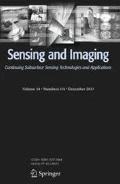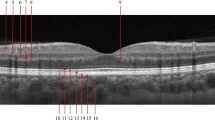Abstract
Automatic and accurate classification of retinal optical coherence tomography (OCT) images is essential to assist ophthalmologists in the diagnosis and grading of macular diseases. Most existing methods classify 3-D retinal OCT volumes by separately analyzing each single-frame 2-D B-scan, and thus inevitably ignore significant temporal information among B-scans. In this paper, we propose to classify volumetric OCT images via a recurrent neural network (VOCT-RNN) which can fully exploit temporal information among B-scans. Specifically, a deep convolutional neural network is first utilized to automatically extract highly representative features from each individual B-scan of the 3-D retinal OCT images. Then, a long short-term memory network is employed to model the temporal dependencies among B-scans and achieve volumetric OCT classification. The proposed VOCT-RNN can be directly learned from volume-level labels, requiring no detailed annotations at each B-scan. Experimental results on two clinically acquired OCT datasets demonstrate the effectiveness of the proposed VOCT-RNN for volumetric retinal OCT image classification.





Similar content being viewed by others
References
Pascolini, D., & Mariotti, S. P. (2012). Global estimates of visual impairment: 2010. British Journal of Ophthalmology, 96(5), 614–628.
Neely, D. C., Bray, K. J., Huisingh, C. E., Clark, M. E., McGwin, G. J., & Owsley, C. (2017). Prevalence of undiagnosed age-related macular degeneration in primary eye care. JAMA Ophthalmology, 135(6), 570–575.
Hirai, F. E., Knudtson, M. D., Klein, B. E., & Klein, R. (2008). Clinically significant macular edema and survival in type 1 and type 2 diabetes. American Journal of Ophthalmology, 145(4), 700–706.
Huang, D., Swanson, E. A., Lin, C. P., Schuman, J. S., Stinson, W. G., Chang, W., et al. (1991). Optical coherence tomography. Science, 254(5035), 1178–1181.
Nassif, N., Cense, B., Park, B., Pierce, M., Yun, S., Bouma, B., et al. (2004). In vivo high-resolution video-rate spectral-domain optical coherence tomography of the human retina and optic nerve. Optics Express, 12(3), 367–376.
Drexler, W., & Fujimoto, J. G. (2008). State-of-the-art retinal optical coherence tomography. Progress in Retinal and Eye Research, 27(1), 45–88.
Puliafito, C. A., Hee, M. R., Lin, C. P., Reichel, E., Schuman, J. S., Duker, J. S., et al. (1995). Imaging of macular diseases with optical coherence tomography. Ophthalmology, 102(2), 217–229.
Liu, Y. Y., Chen, M., Ishikawa, H., Wollstein, G., Schuman, J. S., & Rehg, J. M. (2011). Automated macular pathology diagnosis in retinal OCT images using multi-scale spatial pyramid and local binary patterns in texture and shape encoding. Medical Image Analysis, 15(5), 748–759.
Srinivasan, P. P., Kim, L. A., Mettu, P. S., Cousins, S. W., Comer, G. M., Izatt, J. A., et al. (2014). Fully automated detection of diabetic macular edema and dry age-related macular degeneration from optical coherence tomography images. Biomedical Optics Express, 5(10), 3568–3577.
Venhuizen, F. G., van Ginneken, B., van Asten, F., van Grinsven, M. J., Fauser, S., Hoyng, C. B., et al. (2017). Automated staging of age-related macular degeneration using optical coherence tomography. Investigative Ophthalmology & Visual Science, 58(4), 2318–2328.
Lemaitre, G., Rastgoo, M., Massich, J., Cheung, C. Y., Wong, T. Y., Lamoureux, E., et al. (2016). Classification of SD-OCT volumes using local binary patterns: Experimental validation for DME detection. Journal of Ophthalmology, 10(12), 329–346.
Sun, Y., Li, S., & Sun, Z. (2017). Fully automated macular pathology detection in retina optical coherence tomography images using sparse coding and dictionary learning. Journal of Biomedical Optics, 22(1), 12–21.
Fang, L., Wang, C., Li, S., Yan, J., Chen, X., & Rabbani, H. (2017). Automatic classification of retinal three-dimensional optical coherence tomography images using principal component analysis network with composite kernels. Journal of Biomedical Optics, 22(11), 11–16.
Wang, Y., Zhang, Y., Yao, Z., Zhao, R., & Zhou, F. (2016). Machine learning based detection of age-related macular degeneration (AMD) and diabetic macular edema (DME) from optical coherence tomography (OCT) images. Biomedical Optics Express, 7(12), 4928–4940.
Kafieh, R., Rabbani, H., & Selesnick, I. (2015). Three dimensional data-driven multi scale atomic representation of optical coherence tomography. IEEE Transactions on Medical Imaging, 34(5), 1042–1062.
Fang, L., Li, S., Cunefare, D., & Farsiu, S. (2017). Segmentation based sparse reconstruction of optical coherence tomography images. IEEE Transactions on Medical Imaging, 36(2), 407–421.
Amini, Z., & Rabbani, H. (2017). Optical coherence tomography image denoising using gaussianization transform. Journal of Biomedical Optics, 22(8), 86–101.
Kafieh, R., Rabbani, H., Abramoff, M. D., & Sonka, M. (2013). Curvature correction of retinal OCTs using graph-based geometry detection. Physics in Medicine & Biology, 58(9), 2925–2938.
Zhang, Q., Li, J., Zhuo, L., Zhang, H., & Li, X. (2017). Vehicle color recognition with vehicle-color saliency detection and dual-orientational dimensionality reduction of CNN deep features. Sensing and Imaging, 18(1), 20–29.
Shen, D., Wu, G., & Suk, H. I. (2017). Deep learning in medical image analysis. Annual Review of Biomedical Engineering, 19(1), 221–248.
Qi, D., Hao, C., Lequan, Y., Lei, Z., Jing, Q., Defeng, W., et al. (2016). Automatic detection of cerebral microbleeds from MR images via 3D convolutional neural networks. IEEE Transactions on Medical Imaging, 35(5), 1182–1195.
Pereira, S., Pinto, A., Alves, V., & Silva, C. A. (2016). Brain tumor segmentation using convolutional neural networks in MRI images. IEEE Transactions on Medical Imaging, 35(5), 1240–1251.
Grinsven, M. J. J. P. V., Ginneken, B. V., Hoyng, C. B., Theelen, T., & Sánchez, C. I. (2016). Fast convolutional neural network training using selective data sampling: Application to hemorrhage detection in color fundus images. IEEE Transactions on Medical Imaging, 35(5), 1273–1284.
Benaddy, M., El Meslouhi, O., Es-saady, Y., & Kardouchi, M. (2019). Handwritten tifinagh characters recognition using deep convolutional neural networks. Sensing and Imaging, 20(1), 9–18.
Fang, L., Cunefare, D., Wang, C., Guymer, R. H., Li, S., & Farsiu, S. (2017). Automatic segmentation of nine retinal layer boundaries in OCT images of non-exudative AMD patients using deep learning and graph search. Biomedical Optics Express, 8(5), 2732–2744.
Lee, C. S., Baughman, D. M., & Lee, A. Y. (2017). Deep learning is effective for classifying normal versus age-related macular degeneration OCT images. Ophthalmology Retina, 1(4), 322–327.
Rasti, R., Mehridehnavi, A., Rabbani, H., & Hajizadeh, F. (2018). Automatic diagnosis of abnormal macula in retinal optical coherence tomography images using wavelet-based convolutional neural network features and random forests classifier. Journal of Biomedical Optics, 23(3), 35–45.
De Fauw, J., Ledsam, J. R., Romera-Paredes, B., Nikolov, S., Tomasev, N., Blackwell, S., et al. (2018). Clinically applicable deep learning for diagnosis and referral in retinal disease. Nature Medicine, 24(9), 1342–1350.
Fang, L., Wang, C., Li, S., Rabbani, H., Chen, X., & Liu, Z. (2019). Attention to lesion: Lesion-aware convolutional neural network for retinal optical coherence tomography image classification. IEEE Transactions on Medical Imaging, 38(8), 1959–1970.
Rasti, R., Rabbani, H., Mehridehnavi, A., & Hajizadeh, F. (2017). Macular OCT classification using a multi-scale convolutional neural network ensemble. IEEE Transactions on Medical Imaging, 37(4), 1024–1034.
Rong, Y., Xiang, D., Zhu, W., Yu, K., Shi, F., Fan, Z., et al. (2019). Surrogate-assisted retinal OCT image classification based on convolutional neural networks. IEEE Journal of Biomedical and Health Informatics, 23(1), 253–263.
Perdomo, O., Rios, H., Rodríguez, F. J., Otálora, S., Meriaudeau, F., Müller, H., et al. (2019). Classification of diabetes-related retinal diseases using a deep learning approach in optical coherence tomography. Computer Methods and Programs in Biomedicine, 178(6), 181–189.
Ronneberger, O., Fischer, P., & Brox, T. (2015). U-Net: Convolutional networks for biomedical image segmentation. In International conference on medical image computing and computer-assisted intervention (pp. 234–241).
Wold, S., Esbensen, K., & Geladi, P. (1987). Principal component analysis. Chemometrics and Intelligent Laboratory Systems, 2(1–3), 37–52.
He, K., Zhang, X., Ren, S., & Sun, J. (2016). Deep residual learning for image recognition. In Proceedings of CVPR (pp. 770–778).
Hochreiter, S., & Schmidhuber, J. (1997). Long short-term memory. Neural Computation, 9(8), 1735–1780.
Zou, M., & Zhong, Y. (2018). Transfer learning for classification of optical satellite image. Sensing and Imaging, 19(1), 6–14.
Ciompi, F., de Hoop, B., van Riel, S. J., Chung, K., Scholten, E. T., Oudkerk, M., et al. (2015). Automatic classification of pulmonary peri-fissural nodules in computed tomography using an ensemble of 2D views and a convolutional neural network out-of-the-box. Medical Image Analysis, 26(1), 195–202.
Samala, R. K., Chan, H., Hadjiiski, L., Helvie, M. A., Richter, C. D., & Cha, K. H. (2018). Breast cancer diagnosis in digital breast tomosynthesis: effects of training sample size on multi-stage transfer learning using deep neural nets. IEEE Transactions on Medical Imaging, 2(1), 101–113.
Shin, H.-C., Roth, H. R., Gao, M., Lu, L., Xu, Z., Nogues, I., et al. (2016). Deep convolutional neural networks for computer-aided detection: CNN architectures, dataset characteristics and transfer learning. IEEE Transactions on Medical Imaging, 35(5), 1285–1298.
Krizhevsky, A., Sutskever, I., & Hinton, G. E. (2012). Imagenet classification with deep convolutional neural networks. In Proceedings of the conference on advances in neural information processing systems (pp. 1097–1105).
Glorot, X., & Bengio, Y. (2011). Understanding the difficulty of training deep feedforward neural networks. In Proceedings of the international conference on artificial intelligence and statistics (pp. 249–256).
Acknowledgements
The author would like to thank Prof. Hossein Rabbani from the Department of Biomedical Engineering, Isfahan University of Medical Sciences, for a helpful sharing of OCT dataset.
Author information
Authors and Affiliations
Corresponding author
Additional information
Publisher's Note
Springer Nature remains neutral with regard to jurisdictional claims in published maps and institutional affiliations.
Rights and permissions
About this article
Cite this article
Wang, C., Jin, Y., Chen, X. et al. Automatic Classification of Volumetric Optical Coherence Tomography Images via Recurrent Neural Network. Sens Imaging 21, 32 (2020). https://doi.org/10.1007/s11220-020-00299-y
Received:
Revised:
Published:
DOI: https://doi.org/10.1007/s11220-020-00299-y




